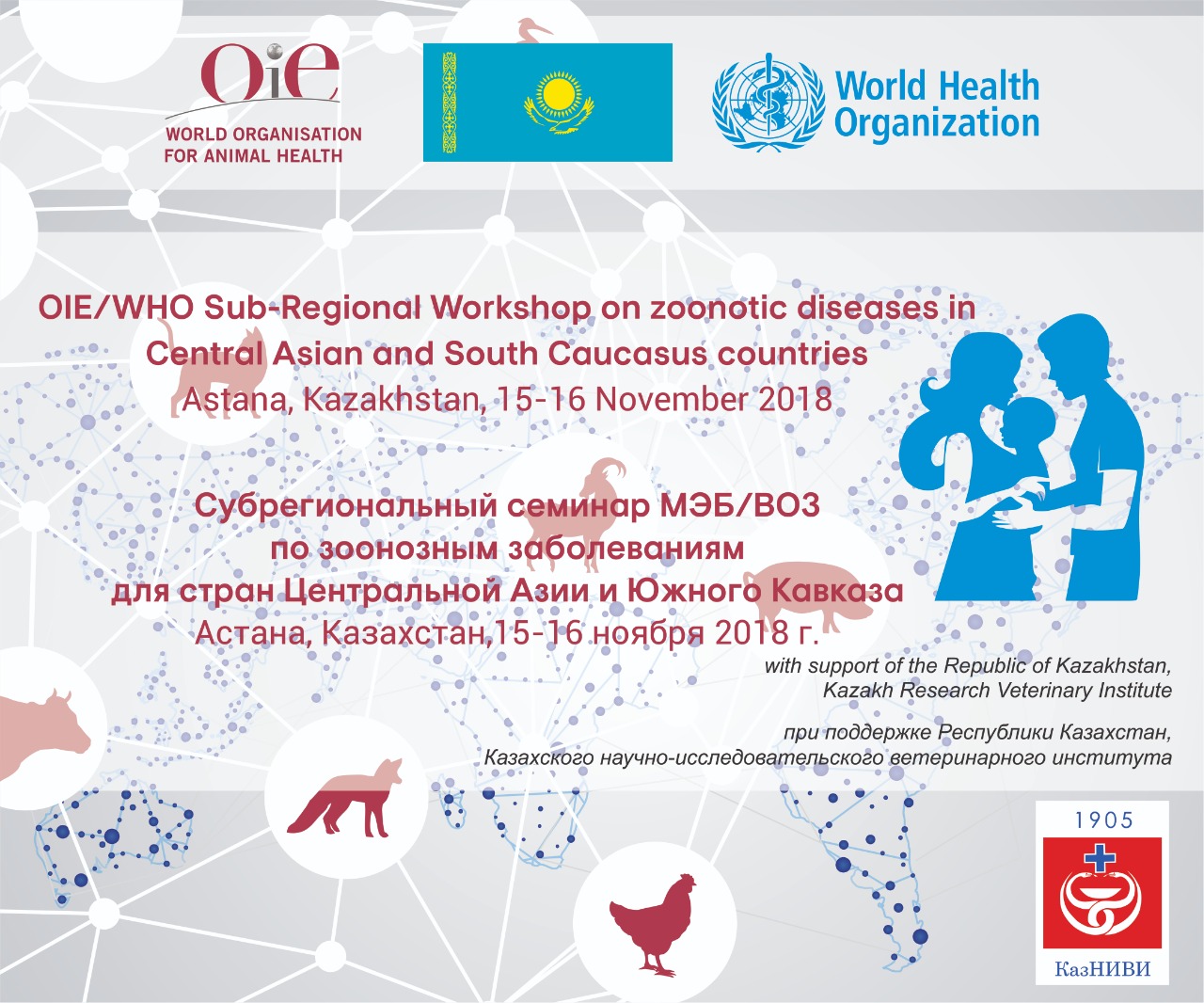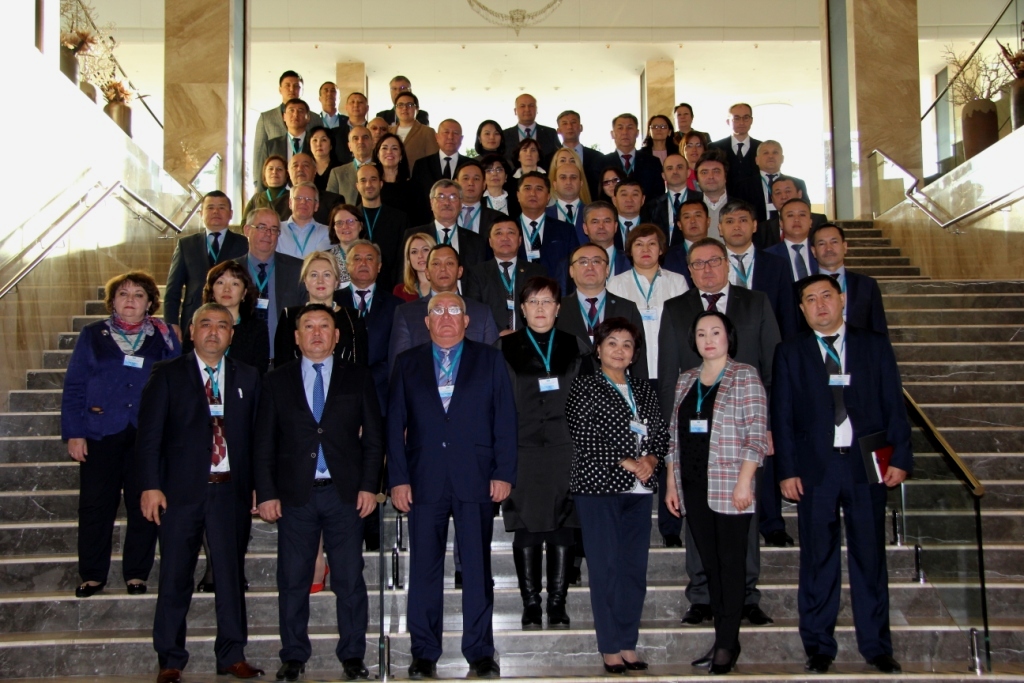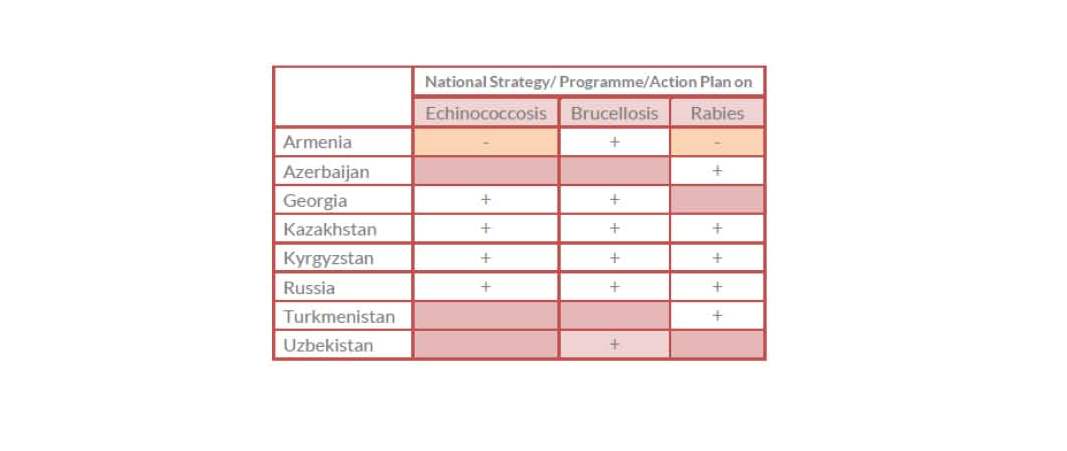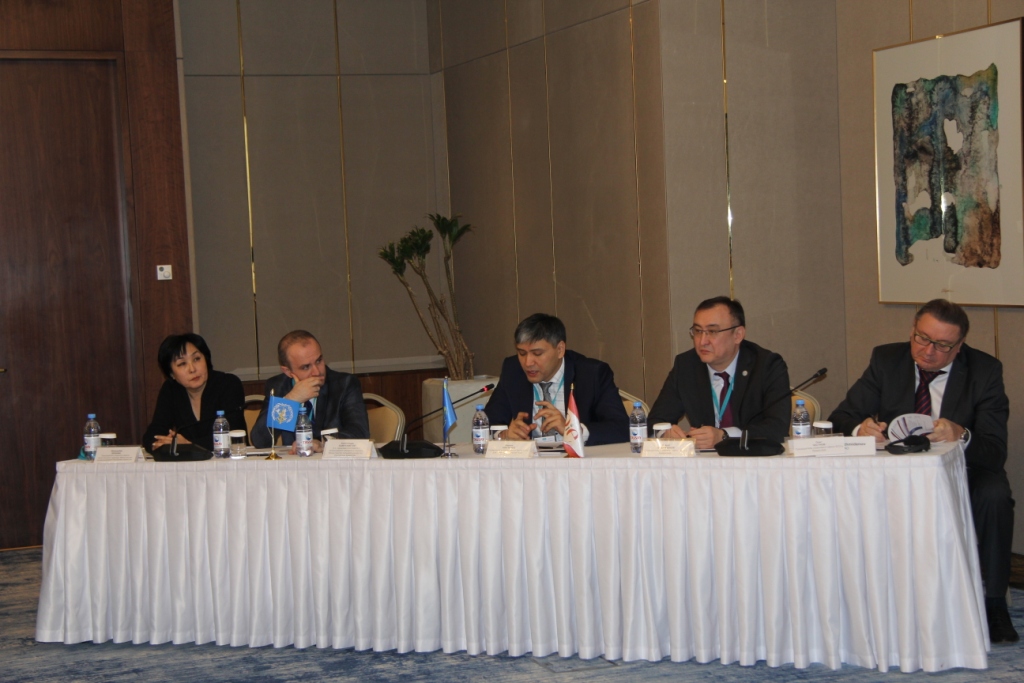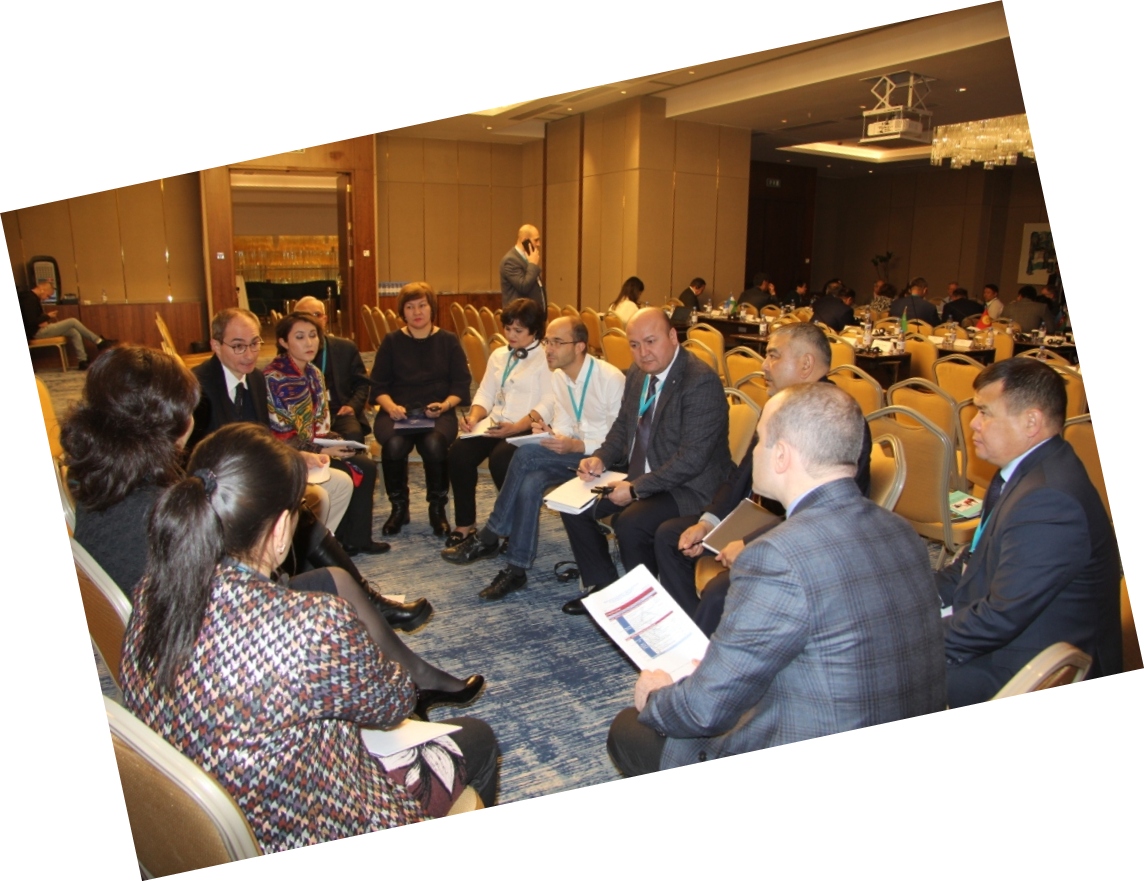The OIE and WHO, working closely with the competent authorities in the countries of Central Asia and South Caucasus, identified three priority zoonotic diseases of paramount importance for human and animal health in the region: brucellosis, rabies and echinococcosis.
Representatives of the animal and human health sectors of nine invited countries, as well as representatives of international organisations and OIE and WHO experts, came together in Astana, Kazakhstan, to increase countries’ awareness of ‘One Health’ global activities and discuss barriers faced at the national level in controlling zoonotic diseases.
“A clear promotion of the ‘One Health’ concept at the national level, when combined with significant and sustained political support should enable the prevention of diseases, at the human–animal–ecosystem interface, that have a major impact on public health. However, an insufficiency or complete absence of such cooperation between Veterinary Services and Public Health Services is unfortunately still too frequent.”
Efforts to control zoonotic diseases in the region are evidenced in different countries rules and procedures. For example, it is reflected in the Rules for the prevention and control of infectious diseases common to humans and animals: “Brucellosis”, Instructions on measures for the prevention and elimination of animal diseases by helminth infections, etc.
Moreover, inter-sectoral collaboration is reported at different levels, through the Inter-Agency Council, working groups, etc., however quantifying the efficacy of such collaboration, and the openness and transparency involved in such work is difficult. Despite the existence of a large regulatory and legal framework for inter-sectoral collaboration and communication between services and departments, work at the local level to control zoonotic diseases is not well-coordinated. For example, national coordination between the veterinary and public health sectors on echinococcosis in Armenia is still reported as being non-existent.
The countries of this region have similar challenges in the main:
As a result of the two days of discussions, and exchanges of experiences, views and knowledge, the following recommendations were made:
1 IHR/PVS: Internal Health Regulation/Performance of the Veterinary Services (a workshop format that enables countries to further explore possible overlapping areas addressed in their PVS and IHR capacity frameworks and develop, where relevant, appropriate bridges to facilitate coordination).
The OIE and WHO will continue facilitating and supporting this initiative and promote an intersectoral cooperation through different activities on the national, sub-regional and regional levels.
The participants in these discussions were specialists from the public and animal health sectors of Armenia, Azerbaijan, Georgia, Kazakhstan, Kyrgyzstan, Russia, Tajikistan, Turkmenistan and Uzbekistan, representatives of international organisations, as well as international experts from the OIE and WHO Collaborating Centres.
